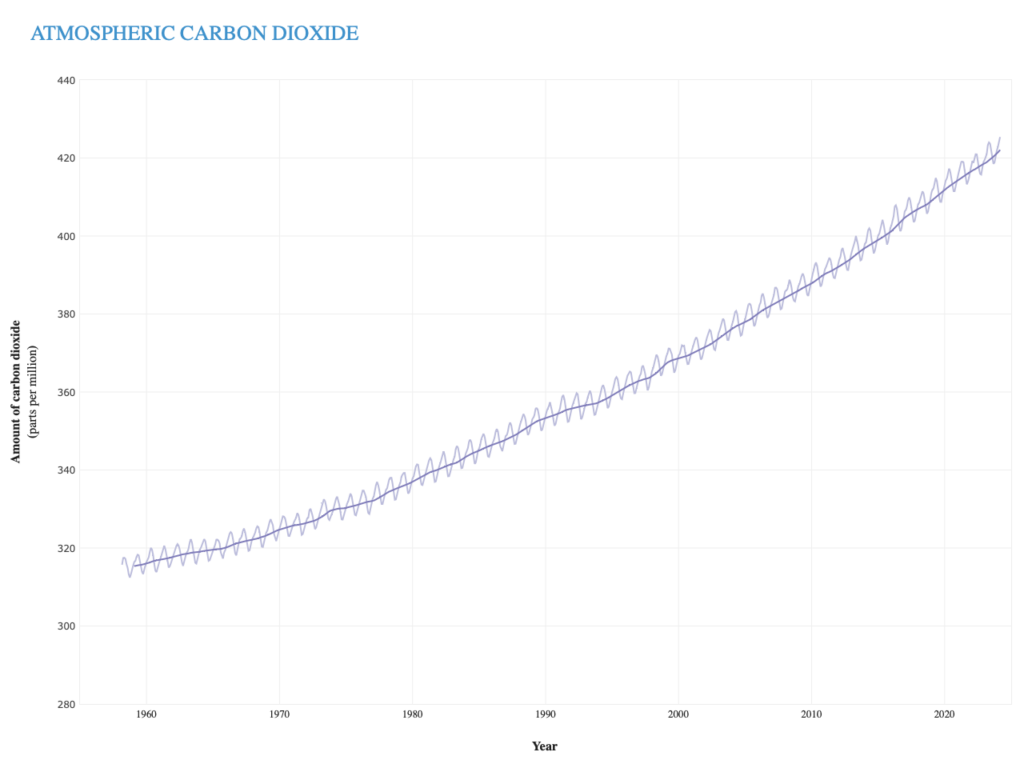Our climate has been changing for millions of years, but ever since humans have started to industrialize there have been extremely rapid and clearly unnatural changes to our climate. Atmospheric carbon dioxide concentrations and temperatures have increased at an extreme rate over the last 150 years, showing undoubtedly anthropogenic origins (Lindsey). Climate feedback systems, which are strong drivers of our climate and determine the speed at which the climate changes, are being heavily impacted by human activity. In today’s world, greenhouse gas emissions are a major cause of global warming. Animal factory farming is responsible for 15.4% of global greenhouse gas emissions, which is almost as much as all transportation combined (Dalzell). Climate change is perhaps the largest global issue that we face today, but what can we do about it and how can we reduce the negative impacts of factory farms? Evidence shows that switching to a vegan, plant-based diet can significantly reduce these emissions (Yale).
In the past, Earth has seen rapid increases in carbon dioxide levels. For example, the Paleocene-Eocene thermal maximum (PETM), which occurred around 56 million years ago, saw extreme heating due to a global greenhouse effect. This caused mass extinctions and saw a significant global temperature rise of 5-8 degrees Celsius (Lindsey.) This long-term warming event saw a Carbon release rate of 0.3-1.5 Pg C/year (petagrams/year). These rates occurred over thousands of years during the onset of the PETM. Comparing this to today, our current emissions rates are around 10 Pg C/year which shows that we are currently emitting carbon around 10 times faster than the previous period of extreme heating (Gingerich). The PETM was a world-changing heating event that occurred over thousands of years and subsequently took hundreds of thousands of years to recover (University of South Hampton). Our current emission levels are not only significantly higher than this period but are occurring at a much faster rate, proving the current climate change is due to human activity based emissions (Lindsey). Fast action is needed if we want to make an impact and keep our planet from reaching conditions that are impossible to recover from.
The animal factory farming industry is one of the largest contributors to climate change. Factory farms emit immense amounts of carbon dioxide. Production of fertilizer emits around 41 million tons of carbon dioxide per year while CAFOs (Concentrated Animal Feeding Operations) emit around 90 million tons. Methane, another greenhouse gas that is much more potent and remains in the atmosphere much longer compared to carbon dioxide, is also an issue (Koneswaran and Nierenberg). Factory farms are responsible for nearly half of the world’s methane emissions. Along with the heavy emissions of greenhouse gasses, like carbon dioxide and methane, factory farms are also responsible for 55% of water use in the United States and 16% globally (Dalzell). Conservation of freshwater is extremely important and this industry is responsible for much of its use. The environmental impact of factory farms is quite alarming and focused efforts to reduce these emissions would prove extremely beneficial to our planet.
Many large-scale actions and solutions can slow the impacts of climate change, but one action we as individuals can do every day is to eat a plant-based, or plant-heavy diet. A study shows that eating a completely plant-based diet produces 75% less greenhouse gasses compared to a meat-heavy diet and 50% less than a low-meat diet when taking into account required resources for and emissions from food production (Yale). However, one does not have to have a completely plant-based diet to have a positive impact. The same study shows that being vegetarian, pescetarian, or even just lowering one’s meat consumption in general significantly reduces greenhouse gas emissions by not supporting animal factory farming. The food we choose to eat is a significant part of our carbon footprint and if we want to slow the dangerous, quick rise in climate change effects, eating plants is one of the most practical, attainable, and accessible solutions. (Citations linked within the article)
– Arrow Vandenbergheimer

The modern record of atmospheric carbon dioxide levels began with observations recorded at Mauna Loa Observatory in Hawaii. This graph shows the station’s monthly average carbon dioxide measurements since 1958 in parts per million (ppm). The seasonal cycle of highs and lows (small peaks and valleys) is driven by Northern Hemisphere summer vegetation growth, which reduces atmospheric carbon dioxide, and winter decay, which increases it. The long-term trend of rising carbon dioxide levels is driven by human activities. At Mauna Loa, the highest monthly value each year occurs in May. In May 2023, carbon dioxide hit 424 ppm—a new record. NOAA Climate.gov image, based on Mauna Loa monthly mean data from NOAA Global Monitoring Lab.
Our food choices make a difference. Start choosing plants for the environment today!








About The Author: Vegan Action
More posts by Vegan Action